| |
Typically, a
barefoot park allows the visitors to walk on a wide variety of materials. To prevent
materials from spreading, most need to be bordered. It is also important to prevent foot
strain caused by too many hard and coarse textures like wood chips or gravel stones!
|
enlargeable
thumbnails: |
| Paths with sand
and mulch |
Sand or bark mulch are
ideal materials for convenient barefooting. Therefore they can be used for longer
sections. As far as some dislocation of these materials in the walking direction is
tolerable, bordering may not be needed. Other
materials like pebbles, fir cones, etc. are better placed in a frame.
|
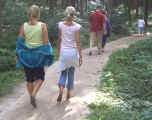 |
| Embedded sensory
sections |
Sensory beds surrounded
by lawn should be made even with the ground to facilitate cutting the grass. Even
arrangement is also recommended in skiing areas where snowcats or snowmobiles may operate
during winter. To fit the materials, the
upper layer of earth has to be removed and a permeable but durabke weed-inhibitor cloth
material is inlaid before placing the materials. Optionally, a wooden frame may fix the
contour. |
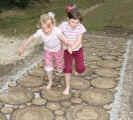 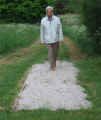
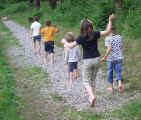 |
| Bordered by
stone |
A border of curbstones
is more expensive but offers a long-lasting solution. |
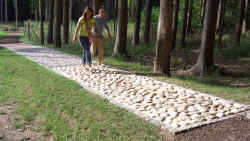 |
| |
In combination with
colored pavement a really elegant design for residential areas can be implemented. |
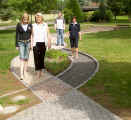 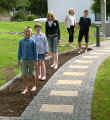 |
| Wooden frames |
Frames of wooden beams
are well-suited for forest areas. |
 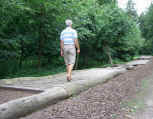 |
| |
Handrails are not
essential but may help barefoot novices to keep track on rough materials. |
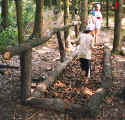 |
| Parallel track
for tenderfeet |
Longer stretches of
rough materials may be complemented with a parallel track of sand or soft mulch.
Visitors have the choice to cross over, before pain begins..... |
  |
| |
A wooden walk gives the
chance to sidestep challenges like a stony streambed or a wobbly chain walk. |
  |
| Catwalks |
All kinds of wooden
surface can be placed above ground. |
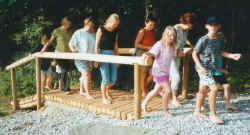 |
| How to avoid
mixing of materials |
Materials like sand,
fine gravel or chippings, shavings, mulch and especially mud may be picked up on feet and
mixed in accidently with other materials further down the path. It is therefore
recommended to separate these substrates by stretches of natural ground, by solid
materials, or by balancing stations. |
 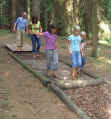
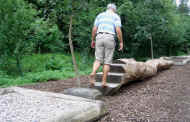 |
| |
Optionally a foot scraper section can be placed at the end of the sensation bed. This is
especially recommended for glass chippings. |
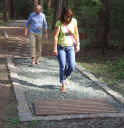 |
| Sensation path
for wheelchair users |
This alignment makes the
barefoot park interesting for wheelchair users and allows them to feel the different
materials with their hands. |
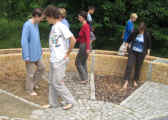 |
| Blind walk with handrail |
A loop with 8 - 10 different soil
materials and a continuous handrail on the inner side allows for feeling the ground with
closed eyes. 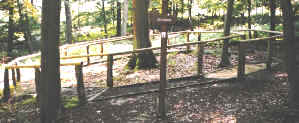
|
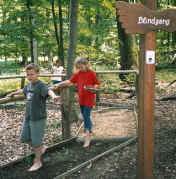
|
| Following the rope |
A rope is spanned between poles and
helps the blindfolded barefooter to keep on the track over a variety of materials and even
through flowing water. 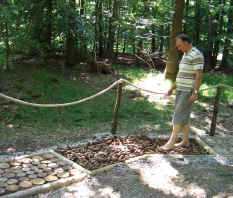
|
 
|
























